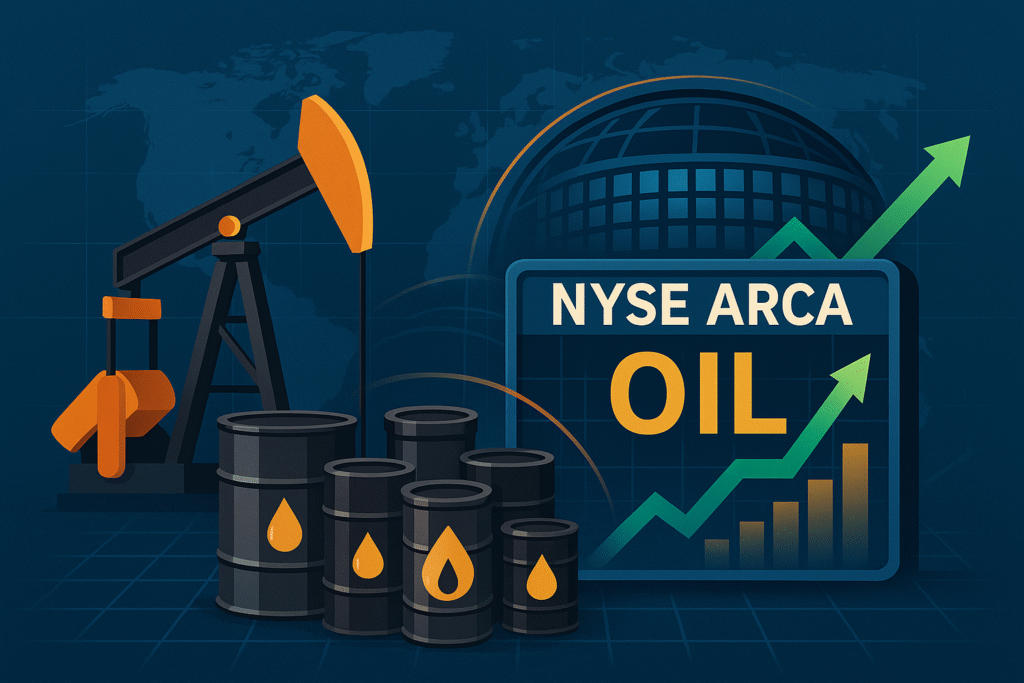A price‑weighted benchmark of the largest, most liquid U.S.–listed energy producers and integrated majors, the NYSE Arca Oil Index (ticker XOI) offers investors a real‑time barometer of the upstream and integrated segment of the global petroleum industry.

1. What the Index Tracks
First and foremost, XOI bundles 25 blue‑chip oil stocks—including Exxon Mobil, Chevron, ConocoPhillips, Occidental, EOG Resources and Schlumberger—giving immediate visibility into exploration, production and integrated refining margins.
2. Construction Highlights
| Rule | Detail |
|---|---|
| Selection | NYSE‑listed oil & gas producers with large‐cap status and robust trading liquidity |
| Weighting | Price‑weighted (similar to the Dow); higher‑priced shares steer moves |
| Divisor Maintenance | Adjusted for splits, spin‑offs and dividends so index continuity is preserved |
| Review Cadence | Ad‑hoc changes when constituents delist or fail liquidity screens |
Because of its price weighting, Exxon Mobil and Chevron together currently account for about 18 % of daily point swings.
3. Snapshot (May 2025)
| Metric | Value |
|---|---|
| Index Level | 2 980 |
| YTD Return | +7.2 % |
| Dividend Yield* | 3.6 % |
| Top Sector Exposure | Integrated oil & gas (62 %) |
| Currency | U.S. dollar |
*Cash dividend yield of constituents, not of the price index itself.
4. Recent Performance
| Year | Total Return | Main Catalyst |
|---|---|---|
| 2022 | +43.0 % | Post‑COVID demand surge, supply constraints |
| 2023 | –5.9 % | Oil‑price pullback, OPEC+ discipline |
| 2024 | +15.4 % | Share‑buybacks, resilient crack spreads |
| YTD 2025 | +7.2 % | Geopolitical risk premium, capital‑discipline focus |
Volatility averages 24 %, tracking swings in Brent crude.
5. Why Investors Follow XOI
- Pure‑Play Oil Beta: Unlike broad energy indices that include pipelines and utilities, XOI zeroes in on producers and integrated majors.
- Derivative Liquidity: ICE lists well‑traded XOI futures and options, enabling tactical hedging.
- Income Potential: Constituents historically yield more than the S&P 500, enhancing defensive positioning.
- Macro Signal: Because oil equities discount future commodity prices, index moves often foreshadow spot‑price trends.
6. Strengths & Caveats
| Strengths | Caveats |
|---|---|
| Clear focus on upstream and integrated names | Price weighting overemphasises high‑priced stocks regardless of size |
| Deep historical data back to 1984 | Excludes supermajors listed abroad (e.g., Shell, BP ADR lines) |
| Futures market offers efficient exposure | Highly cyclical—sensitive to crude prices and OPEC policy |
7. Themes to Watch
- Capital Discipline: Share‑buyback authorisations could lift per‑share earnings and dividend capacity.
- Energy Transition: Carbon‑capture and hydrogen investments may reshape revenue mixes yet preserve cash flow.
- Geopolitics: Any Strait‑of‑Hormuz disruption would spike index prices faster than broader equity gauges.
- Shale Efficiency: U.S. rig‑count productivity gains may offset slower global supply growth.
Key Takeaways
- XOI condenses 25 U.S.–listed oil titans into a price‑weighted benchmark, now hovering near 2 980 points with a 3.6 % dividend profile.
- Because price weighting favors higher share prices, index point moves can differ from market‑cap impacts seen in cap‑weighted peers.
- Traders and allocators alike monitor XOI for directional oil exposure, derivatives hedging, and dividend‑rich equity income.